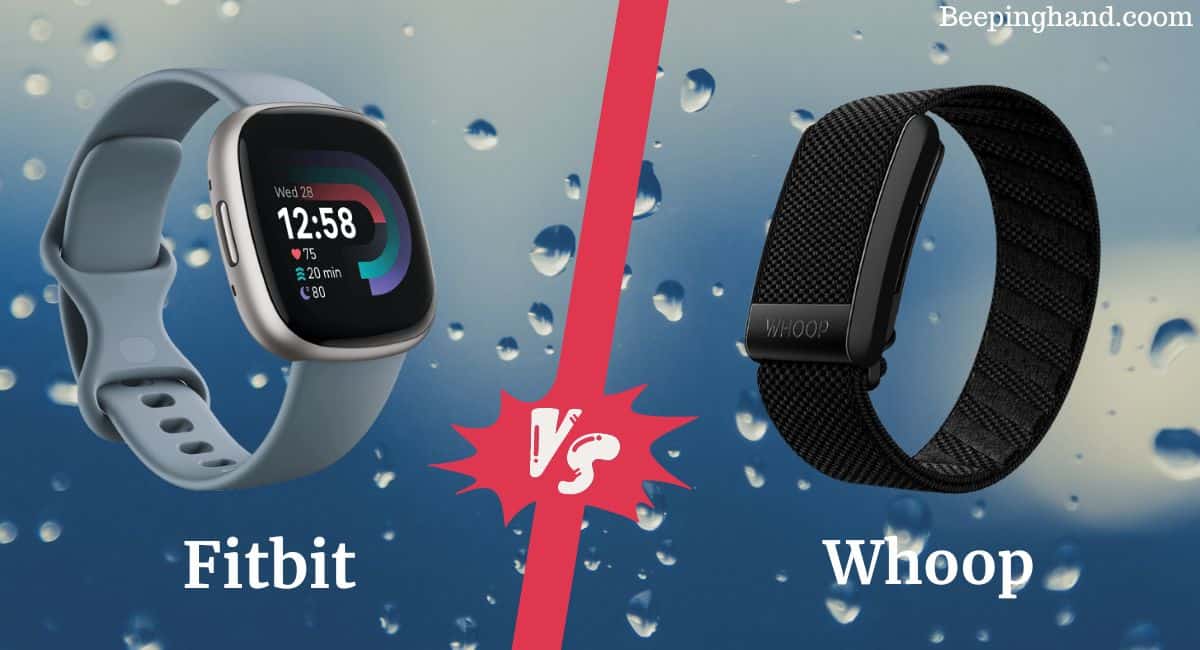Two prominent names that stand out are Whoop and Fitbit. Both companies offer cutting-edge wearable devices that cater to fitness enthusiasts and health-conscious individuals.
This article aims to provide a thorough and unbiased comparison of Whoop vs Fitbit, highlighting their key features, functionalities, and advantages.
By the end of this article, you’ll have a clear understanding of which device aligns better with your specific needs and preferences.
Whoop vs Fitbit
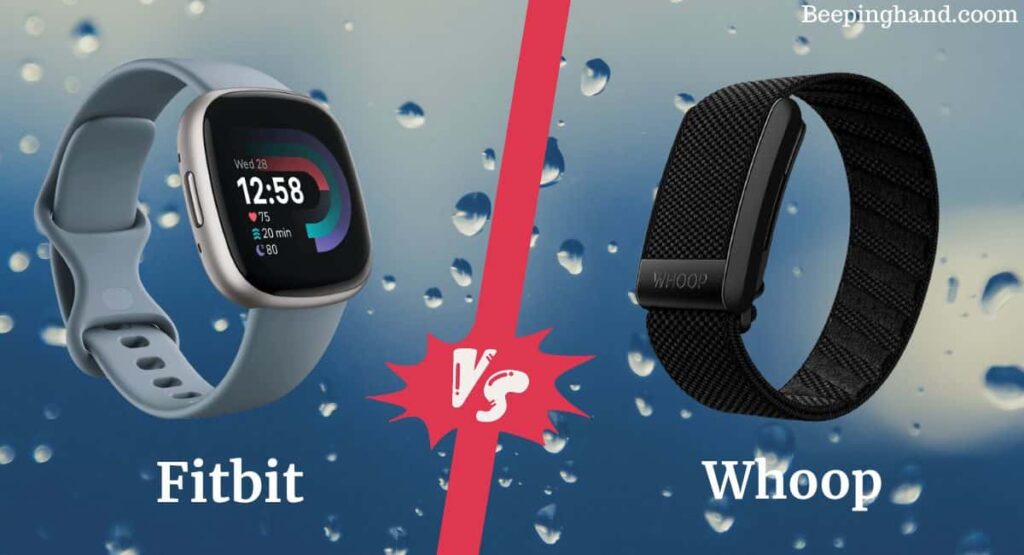
If you are eager to know which is going to win in this comparison article between Whoop and Fitbit then you have come to the right place.
Introduction of Whoop and Fitbit
Whoop Fitness Tracker –
Whoop is a well-known wearable health and fitness tracker that has gained popularity among athletes and fitness enthusiasts. The Whoop strap is designed to be worn 24/7, providing continuous data on various physiological metrics. Its focus lies in optimizing athletic performance and recovery, making it a favored choice among professional athletes.
Fitbit Fitness Tracker –
Fitbit is a pioneering brand in the wearable health technology industry, offering a wide range of devices to cater to different user preferences. Fitbit trackers are known for their versatility and user-friendly interfaces, making them accessible to a broad audience seeking to improve their overall health and fitness.
Design and Comfort
When it comes to wearable devices, design, and comfort play a crucial role in their usability and acceptance.
The Whoop strap boasts a sleek and minimalist design, made from high-quality materials that ensure it’s comfortable to wear throughout the day and during sleep. Its unobtrusive design appeals to athletes who prefer a no-nonsense wearable.
Fitbit offers a diverse range of designs, including wristbands, smartwatches, and clip-on trackers, catering to different user preferences. Fitbit’s devices are designed to be stylish and comfortable, with various options for personalization.
Tracking Features
Both Whoop and Fitbit offer a wide array of tracking features to monitor various aspects of health and fitness.
Let’s explore some of the key tracking features offered by each device –
1. Sleep Tracking
Sleep tracking is a fundamental feature of wearable health devices, and both Whoop and Fitbit excel in this aspect.
The Whoop strap is particularly renowned for its detailed sleep-tracking capabilities. It monitors sleep duration, efficiency, disturbances, and different sleep stages (REM, deep, light sleep). The data collected helps users understand their sleep patterns and make necessary adjustments for better rest and recovery.
Fitbit trackers also provide comprehensive sleep tracking, offering insights into sleep duration, sleep quality, and sleep stages. Some Fitbit devices feature Sleep Score, an overall measure of sleep quality, allowing users to assess their sleep patterns at a glance.
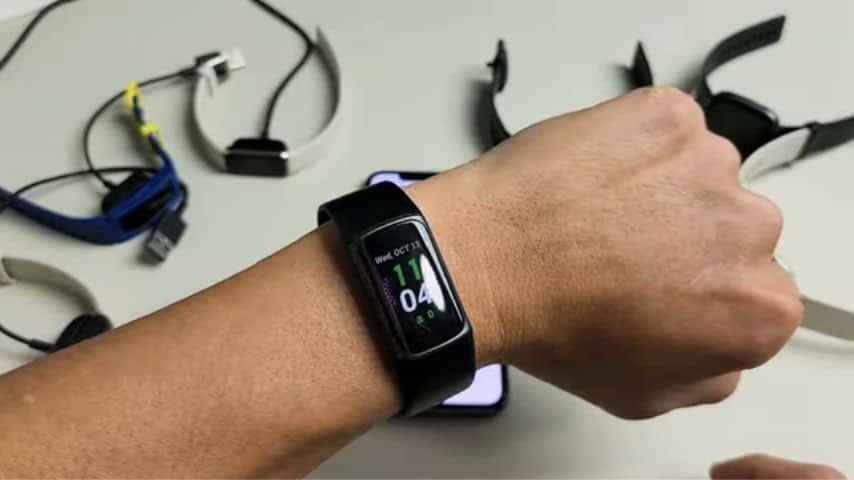
2. Activity Tracking
Activity tracking is crucial for staying motivated and achieving fitness goals. Both Whoop and Fitbit offer activity tracking to monitor daily movement and exercise.
The Whoop strap tracks steps taken, distance traveled, and calories burned throughout the day. However, its primary focus is on assessing the physical strain placed on the body during activities, enabling users to optimize their workouts and prevent overtraining.
Fitbit devices provide comprehensive activity tracking, including step count, distance, calories burned, and active minutes. Fitbit also offers automatic exercise recognition, making it convenient for users to track their workouts without manual input.
3. Heart Rate Monitoring
Accurate heart rate monitoring is essential for assessing exercise intensity and overall cardiovascular health.
The Whoop strap features continuous heart rate monitoring, providing real-time data on heart rate throughout the day and during workouts. This information contributes to the calculation of Strain and Recovery scores, helping athletes optimize their training schedules.
Fitbit trackers also offer continuous heart rate monitoring, allowing users to track their heart rate trends and resting heart rate. Heart rate data aids in estimating calorie burn and assessing cardiovascular fitness.
4. GPS and Navigation
GPS tracking and navigation are essential for users engaged in outdoor activities such as running, cycling, or hiking.
The Whoop strap does not have built-in GPS, relying on a connected smartphone for GPS data during outdoor workouts.
Fitbit offers GPS tracking in some of its smartwatches, enabling users to accurately track their routes and distances without relying on a smartphone.
5. Health and Wellness Metrics
Beyond the core tracking features, both Whoop and Fitbit offer additional health and wellness metrics to provide users with a holistic view of their well-being.
The Whoop strap focuses on recovery metrics, providing users with personalized recovery scores based on heart rate variability, sleep quality, and other factors. This data empowers athletes to optimize their training and rest for better performance.
Fitbit devices offer various health metrics, including heart rate variability, breathing rate, and skin temperature. Fitbit Premium subscribers gain access to additional insights and guidance on stress management and overall well-being.
Data Accuracy and Interpretation
Data accuracy and interpretation are crucial for making informed decisions about one’s health and fitness progress.
Whoop utilizes advanced sensors and algorithms to ensure accurate data collection. Its mobile app provides detailed insights and data breakdowns, allowing users to interpret their metrics effectively.
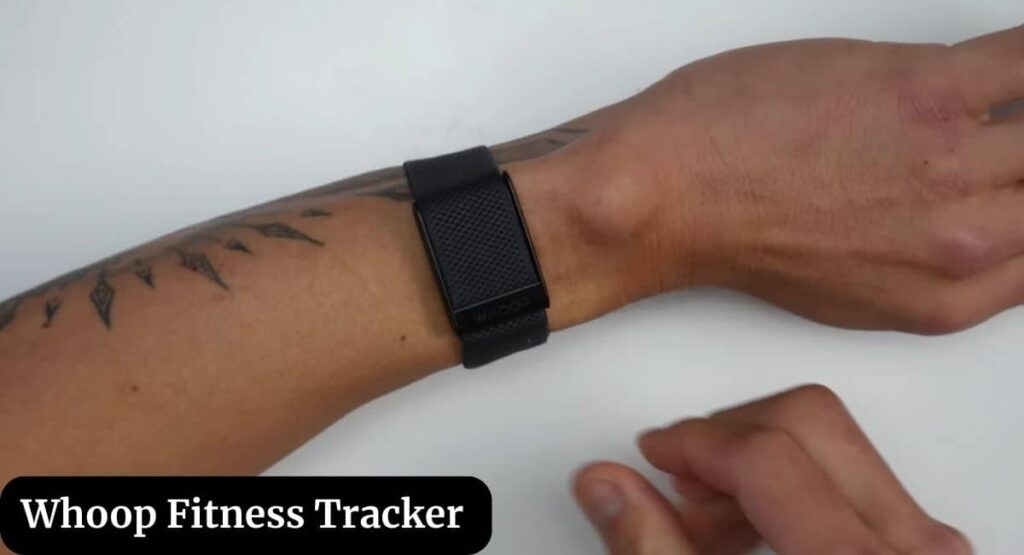
Fitbit also prioritizes data accuracy, employing reliable sensors and data analysis methods. The Fitbit app offers intuitive data visualization and personalized recommendations to help users understand their health metrics.
Mobile App and User Interface
A user-friendly mobile app enhances the overall experience of using a wearable device.
The Whoop app offers a comprehensive dashboard, displaying key metrics like Sleep, Strain, and Recovery in an easily understandable format. The app also provides personalized recommendations to optimize performance and recovery.
Fitbit’s app boasts a user-friendly interface, presenting health and fitness data in a visually appealing manner. It allows users to track their progress over time and participate in challenges and social features for added motivation.
Battery Life and Charging
Battery life is an essential consideration for wearable devices, as users want devices that can last throughout the day and beyond.
The Whoop strap has a battery life of around 3 to 5 days, depending on usage. Charging is done through a magnetic charger that attaches to the back of the strap.
Fitbit devices have varying battery lives based on the model and usage. Some Fitbit trackers can last up to a week or more on a single charge, while smartwatches may require daily charging.
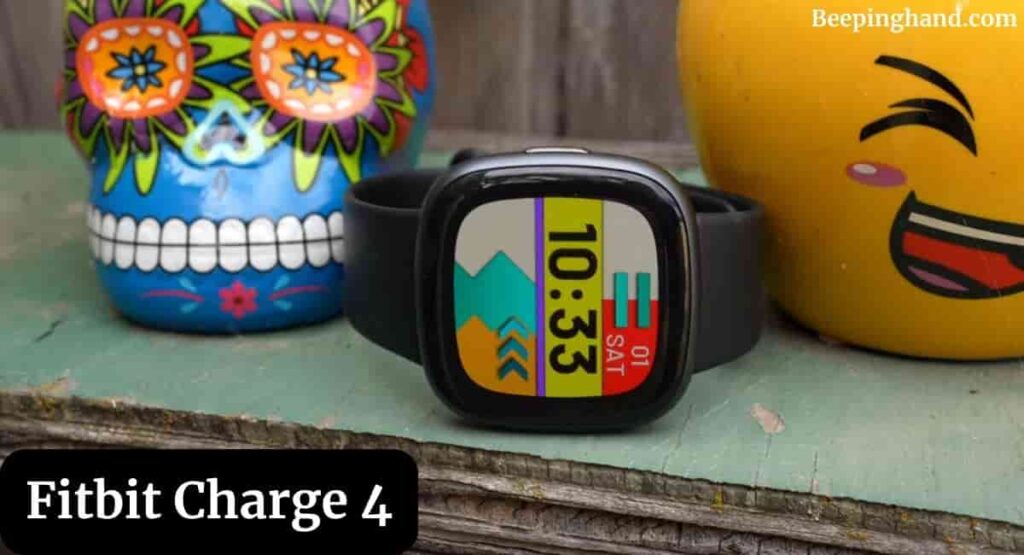
Price Comparison
Price is a significant factor for many potential buyers when choosing between Whoop and Fitbit.
Whoop operates on a subscription-based model, with various membership plans offering access to different features and services. The upfront cost of the strap may be higher, but the subscription includes regular hardware upgrades and access to advanced analytics.
Fitbit devices are available for purchase as one-time investments, with various models and price points to choose from. Fitbit also offers premium features and coaching with a monthly subscription.
Which One is Best for Athletes?
For athletes seeking optimized performance and recovery tracking, the Whoop strap may be the preferred choice. Its focus on Strain and Recovery scores, as well as personalized recommendations, makes it invaluable for athletes aiming to improve their training and achieve peak performance.
Fitbit devices also cater to athletes with their activity tracking and heart rate monitoring capabilities. While Fitbit may not offer the same level of recovery metrics as Whoop, it provides a well-rounded approach to fitness tracking and overall health.
Which One is Best for General Health Tracking?
For users looking for comprehensive health monitoring beyond athletic performance, both Whoop and Fitbit offer valuable insights.
The Whoop strap’s continuous tracking and in-depth analysis of physiological metrics provide users with a comprehensive view of their overall health. Its emphasis on recovery metrics and sleep tracking can benefit anyone seeking to optimize their well-being.
Fitbit’s diverse range of trackers and smartwatches offers a wealth of health metrics, including heart rate variability and stress tracking. Fitbit Premium subscribers gain access to additional health insights and wellness guidance.
Customer Support and User Community
Having reliable customer support and access to a thriving user community can greatly enhance the overall user experience with a wearable device.
Both Whoop and Fitbit offer customer support through various channels, including email and chat, ensuring users can get assistance when needed. Additionally, both companies have active user communities on social media and forums, providing platforms for users to connect, share experiences, and seek advice.
Wrapping Up
This article is all about Whoop vs Fitbit. Both Whoop and Fitbit offer remarkable wearable health and fitness trackers, each with its own set of strengths and advantages. The Whoop strap excels in recovery tracking and performance optimization, making it popular among athletes.
Meanwhile, Fitbit’s diverse range of devices caters to a broader audience seeking general health tracking and wellness insights. When choosing between Whoop and Fitbit, consider your fitness goals, lifestyle, and specific tracking needs to make an informed decision.
Both devices have the potential to support your journey toward a healthier and more active lifestyle.
I hope this article was helpful to you and if you still find any queries then you may ask in the comment box. For more information visit the Help and Support Page of Whoop and Fitbit.
FAQ’s Whoop vs Fitbit
Can I wear the Whoop and Fitbit simultaneously?
Yes, wearing both devices simultaneously is possible, but it may lead to some data duplication in certain metrics.
Do both devices support heart rate monitoring during workouts?
Yes, both Whoop and Fitbit offer continuous heart rate monitoring, providing real-time data during workouts and throughout the day.
Can I use the Whoop app with a Fitbit device and vice versa?
The Whoop and Fitbit apps are designed to work specifically with their respective devices. Cross-platform compatibility may be limited, and certain features may not be accessible when used together.
Which device is better for tracking overall health and wellness?
Both Whoop and Fitbit offer comprehensive health-tracking features, but the best device for tracking overall health and wellness depends on individual preferences and specific health goals.
Are there any differences in data accuracy between the two devices?
Both Whoop and Fitbit prioritize data accuracy and employ reliable sensors and algorithms for data collection. Users can expect accurate tracking of health and fitness metrics with both devices.
